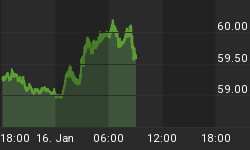In this week's interview, gold dealer Tom Cloud of National Numismatic Associates explains why different one-ounce gold coins sometimes trade at verydifferent prices, and how buyers can take advantage of these fluctuations.
DollarCollapse: Hi again, Tom. Let's start with your take on the action in the gold market. Looks like we're seeing a bit of a correction.
Tom Cloud: Our technical indicators have been pointing to a pullback before gold goes on to break $1,800. I don't think it'll take it out on the first try but it will soon. Then the next 50 or 70 dollars will come quickly.
DC: That implies another couple of dollars for silver, which would also be nice. In the meantime, let's cover something that baffles a lot of small precious metals investors: Gold is gold, but when we shop for one-ounce coins we're confronted with a range of prices for Gold Eagles, Krugerrands, Maple Leafs and the others. Since they all contain the same amount of gold, and none are rare collectibles, common sense would say that they should trade at the same price. But frequently they don't. Why is that?
TC: It's true that all the major one-ounce coins contain an ounce of gold. Some, like the Canadian Maple Leaf, Australian Kangaroo, and the Austrian Philharmonic are pure 24 carat gold. Gold Eagles and Krugerrands have alloys mixed in to make them more durable, so they're 22 carat gold rather than 24, and they're slightly bigger -- the Krugerrand's a little thicker and the Eagle is a little wider. But they all contain one ounce of gold.
The differences in market price come from the way they're sold. Countries make coins and sell them to wholesalers, who then sell to dealers. Both mark up the coins, and this combination of premiums and commissions is added to the spot price of the metal.
Now, every coin has a different market, no different than anything else, based on supply and demand. Market makers might deal in four or five different types of coins, and if they're getting more orders for one than another, they'll have different bid/ask spreads. There was a major, major order recently on Gold Eagles, millions of dollars, and the wholesalers started raising their bids to buy Gold Eagles, which caused the price to go up relative to the other coins.
On a smaller scale this happens all the time. I get wholesaler price sheets faxed to me every two or three days. Sometimes they'll drop their bid on a certain coin by $5 or $8 because have too many and don't want any more. Then you look at the next guy and he may be $5 or $8 higher because he needs it.
DC: Does it make sense for a buyer to ask their dealer to play this market?
TC: That's what a lot of my clients do. They'll call and ask if I have anything below its normal markup, and usually I do have something. Right now, for instance, Krugerrands, Kangaroos, Philharmonics and Maple Leafs are exactly the same price, while the Gold Eagle is about $20 more because other countries have dropped their premiums to match Canada's. So if you're looking for the most gold for your money, you'd buy one of the others and not Gold Eagles right now.
Another interesting example is the Austrian 100 Corona, a once-ounce coin that only has .9802 of gold in it, so its price is based on that weight. It was only made in Austria from 1908 to 1915, seven years. You go to Europe today and there are firms that sell the Corona as a semi-rare coin and you can see people waiting in line to buy those coins for 8, 10, 15 percent over the amount of gold in them because they figure with them being over 100 years old and in limited supply, they'll have two values, the bullion value and the collector value. But I buy those coins directly from a major outlet in Europe and have about $160,000 of them left that I can sell to clients at 2.75% over spot.
DC: Does it work the same way when a coin owner wants to sell?
Generally yes. You'll sell to a wholesaler on the bid side of the spread. But if you're dealing with me I can go back to the wholesaler and let's say he's charging 3% but is willing to pay 2% [over spot]. I'll give my client all the premium I can get for them over spot [without charging a sales commission]. So in the event, if a client paid 5.5% over spot for an Eagle and can sell it back for 2% he'd only need gold to rise by 3.5% to break even.
















